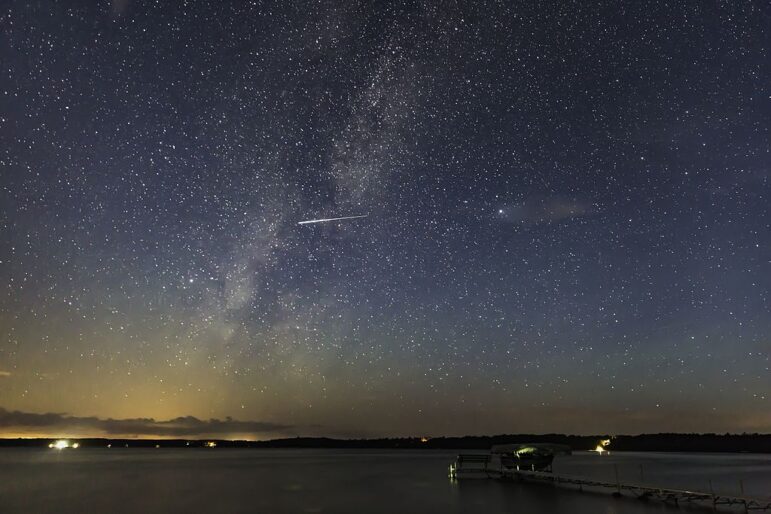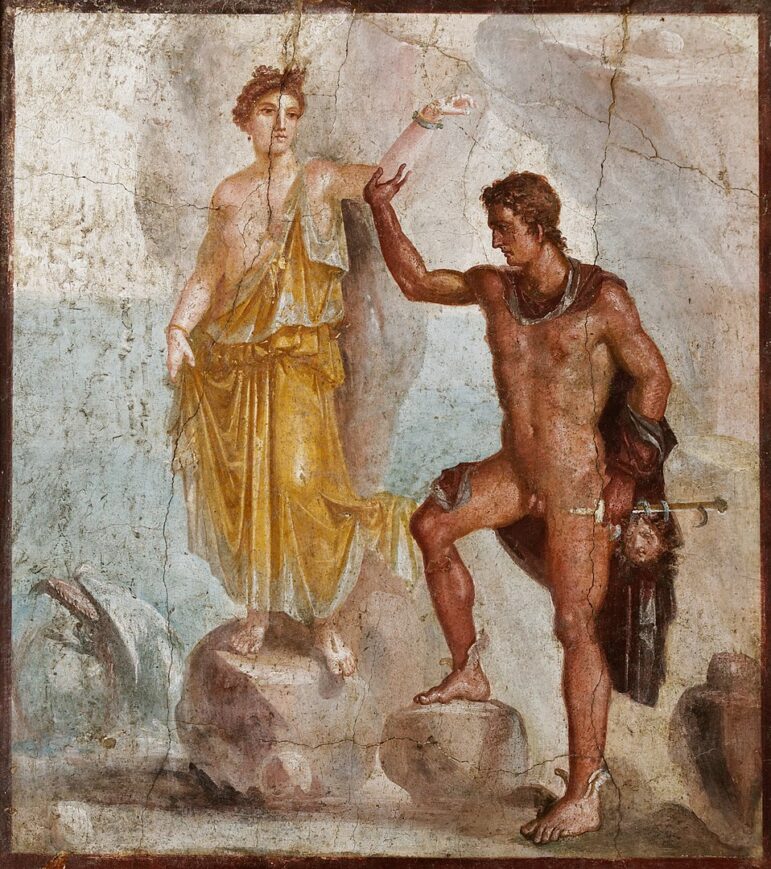
TWH – The Perseids meteor shower season begins tonight, bringing thrilling flashes of light to the nighttime sky. The season will continue through July and August before concluding on September 1st.
The best nights to view meteors will be in mid-August – the 11th, 12th, and 13th to be precise – which is a fortunate coincidence, because, at least in the northern hemisphere, the moon will set just before midnight, according to Jamie Carter in Forbes. That timing means most of the night will be dark and free from moonlight – perfect for watching the shower. Given that the moon’s phases are not always so cooperative, this makes this year one of the best times to take a trip in search of dark skies.

Perseid meteor showers and the Milky Way, in Northern Minnesota at Big Sand Lake [Lorie Shaull, Wikimedia Commons, CC 4.0]
The Perseids are an annual event, caused by the Earth’s orbit intersecting with the path of the comet Swift-Tuttle, which is on a 133-year orbit of its own around the Sun. As the Earth passes through the comet’s tail, particles are caught in our atmosphere and burn up, causing vivid flashes of light in the sky. Swift-Tuttle itself has been spotted in the sky in the 1860s and the 1990s; it will reappear next about a century from now, in 2126.
The Perseids are so named because they appear to come from the direction of the constellation Perseus, named for the hero of Greek mythology, son of Danaë and Zeus and slayer of Medusa and Cetus. The skies around the constellation are full of other characters in the Perseus myth, including Andromeda, the princess whom Perseus saved from Cetus; Pegasus, Perseus’s winged horse; and Andromeda’s parents Cepheus and Cassiopeia. The name “Perseid” means “son of Perseus.”

Perseus and Andromeda in a fresco from the 1st century CE held at the Naples National Archeological Museum [public domain]
The Perseids have folklore in non-Pagan mythologies, as well. The meteors are sometimes called the “tears of St. Lawrence,” after the Catholic saint who both protects against fire and also ensures successful barbecues. (Traditionally, St. Lawrence was martyred by grilling, although this is unlikely to have actually happened historically speaking.)
In addition to the Perseids, there are several other meteor showers taking place in July and August, including the Capricornids, Delta Aquarids, Piscis Australids, Alpha Capricornids, Iota Aquarids and Kappa Cygnids, according to Space.com. While none of these showers will be as large as the Perseids, they will add to the sky’s light show and produce meteors of different colors and speeds.
The best time to observe meteors will be early in the morning, before dawn. This is because in the hours just after sunset, we are still on the Earth’s trailing side, and most potential meteors are not fast enough to catch up to us. After midnight, though, the northern hemisphere is on the leading side of the Earth, and any particle in our path will become a meteor.
How many meteors can we expect to see near the peak? Carter says 50 would be a “terrific result.” But EarthSky reports that under conditions like we have this year, it could even be higher, perhaps 90 or more. It will be a dazzling display either way.
The Wild Hunt is not responsible for links to external content.
To join a conversation on this post:
Visit our The Wild Hunt subreddit! Point your favorite browser to https://www.reddit.com/r/The_Wild_Hunt_News/, then click “JOIN”. Make sure to click the bell, too, to be notified of new articles posted to our subreddit.